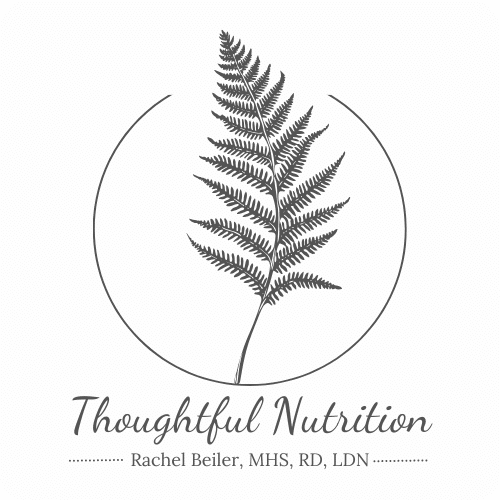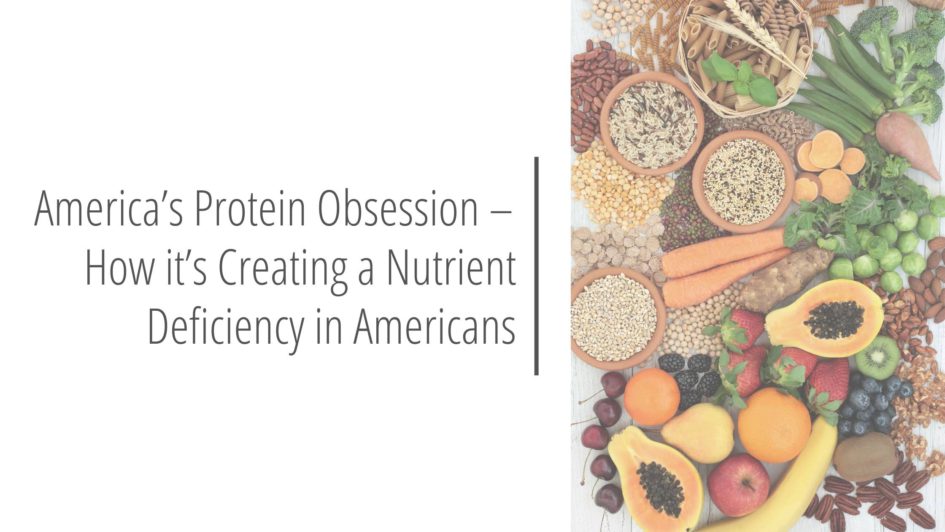Table of Contents
Protein Obsession
High Protein
Over the years as a dietitian, I’ve quickly picked up on America’s protein obsession. When I engage in conversations about nutrition, the most common thought is that we need to eat more protein. People tend to think more protein, fewer carbs.
But guess what? I’m here to say that America isn’t lacking in protein consumption. On the contrary, a protein deficiency in America is almost unheard of. Studies actually show that the average American male eats almost double the recommended amount of protein.
Eating more than the recommended amount of protein isn’t a bragging right, it’s actually hindering our health. Excess protein consumption can lead to bowel problems, risk of kidney damage, increased risk of certain cancers, increase risk of heart disease, and even poor long-term bone health (1).
Low Carb
With protein obsession comes the demonization of carbs. When someone focuses on a high protein diet, that typically comes hand-in-hand with a low carb diet. This leads to people thinking protein is superior to carbohydrates.
However, that’s just not true. What people don’t realize is that carbohydrates are the body’s preferred source of fuel. The human body actually needs a minimum of 130 g of carbs (roughly the equivalent of 8 pieces of bread) per day in order for the brain to function properly. *Not even optimally, just properly.*
Another common thought is that a food high in carbohydrates must be high in calories. However, that’s not true either. Protein and carbohydrates provide the same calories per gram. Protein has 4 kcal/g and carbohydrates have 4 kcal/g. This means that 20 g of protein and 20 g of carbohydrates provide the same amount of calories.
To take that fact even further, foods high in protein (i.e. meat) are typically high in fat. On the other hand, foods high in carbohydrates (i.e. bread) are not typically high in fat. Fat provides 9 kcal/g. This means food high in protein will typically have more calories than food high in carbohydrates. Not only this, but a high-fat diet is correlated to high cholesterol, heart disease, stroke, type 2 diabetes, increased risk of certain cancers, and more.
I’m definitely not stating these facts to demonize calories, fat, or even protein. I am simply trying to point out that America’s protein obsession has caused an overall lack of understanding in regard to nutrition. It’s put protein on so high of a pedestal that it’s causing health problems and creating deficiencies of other nutrients.
This leads me to my next point, the forgotten nutrient.
The Forgotten Nutrient
If we focus on eating so much protein, guess what nutrient we are missing out on because it’s non-existent in animal protein? You guessed it… fiber!
Did you know that 95% of Americans do not eat enough fiber? That means only 5% of the American population is consuming enough fiber.
What Exactly is Fiber?
Fiber is a type of carbohydrate that the body is unable to digest. When we eat “normal” carbohydrates, the body will break them down into sugar molecules (such as glucose) during digestion. However, when we eat fiber, the body is unable to break it down during digestion. This means it goes through the body undigested. This provides us with many different benefits.
There are two types of fiber, soluble and insoluble. Soluble fiber is able to dissolve in water. This type of fiber provides specific benefits such as lowering blood sugar levels and improving cholesterol levels. Soluble fiber is particularly prominent in foods such as beans, nuts, and oatmeal.
On the other hand, insoluble fiber is not able to dissolve in water. This type of fiber provides specific benefits such as assisting the digestive system and regulating bowel movements. Insoluble fiber is particularly prominent in foods such as whole wheat products, legumes, and certain vegetables.
Fiber-Rich Foods
- Any fruit
- Some fruits have more fiber than others, but all are great options
- Any vegetable
- Some vegetables have more fiber than others, but all are great options
- Cruciferous vegetables are an added bonus
- Cabbage, brussels sprouts, broccoli, collard greens, bok choy, etc.
- Legumes / beans
- Black beans
- Chickpeas / garbanzo beans
- Kidney beans
- Pinto beans
- Lentils
- Legume products
- Chickpea pasta, lentil pasta, etc.
- Whole grain / whole wheat foods
- Whole grain / whole wheat bread
- Whole grain / whole wheat products
- pasta, tortillas, crackers, etc.
- Brown rice
- Quinoa
- Oats
- Corn
- Barley
- Bulgur
Thankfully, in order to consume enough fiber, you don’t need to buy an expensive supplement, purchase fiber pills, or eat those nasty Fiber One bars. Simply focus on eating fruits, vegetables, legumes, and whole grain products.
How Much Fiber Should We Eat?
Now that you know where to find fiber, how much do we need to eat on a daily basis?
Females should aim for around 25 grams of fiber per day, while males should aim for about 38 grams of fiber per day.
Currently, the average daily fiber intake of Americans is less than 15 grams.
The Benefits of Eating Fiber
- Reduces constipation
- Regulates bowel movements
- Maintains gut health
- Lowers risk of colorectal cancer
- Fiber intake is one of the top predictors of colorectal cancer, which is the 3rd leading cause of cancer deaths in the world
- Slows down digestion
- Feeds and promotes the growth of the “good” gut bacteria
- Lowers LDL cholesterol
- Helps regulate blood sugar levels / helps prevent blood sugar spikes
- Lowers risk of developing type 2 diabetes
- Can improve life expectancy
- Helps with weight maintenance
- Weight maintenance (the opposite of weight cycling) is a strong predictor of overall health
- Lowers risk of heart disease
- Helps remove harmful substances from the body
- Lowers risk of developing diverticulitis
- Helps regulate hunger / satiety cues
Quick Summary
America’s protein obsession has distracted us from the importance of other nutrients, especially fiber, which 95% of Americans are lacking.
A diet low in fiber means we aren’t receiving all the wonderful benefits that fiber provides. Thankfully, fiber is an easy nutrient to consume as it’s found in fruits, vegetables, legumes, and whole grains.
Now go eat some fiber! 😊
Thanks for reading!
Rachel Beiler, MHS, RD, LDN


Leave a Reply